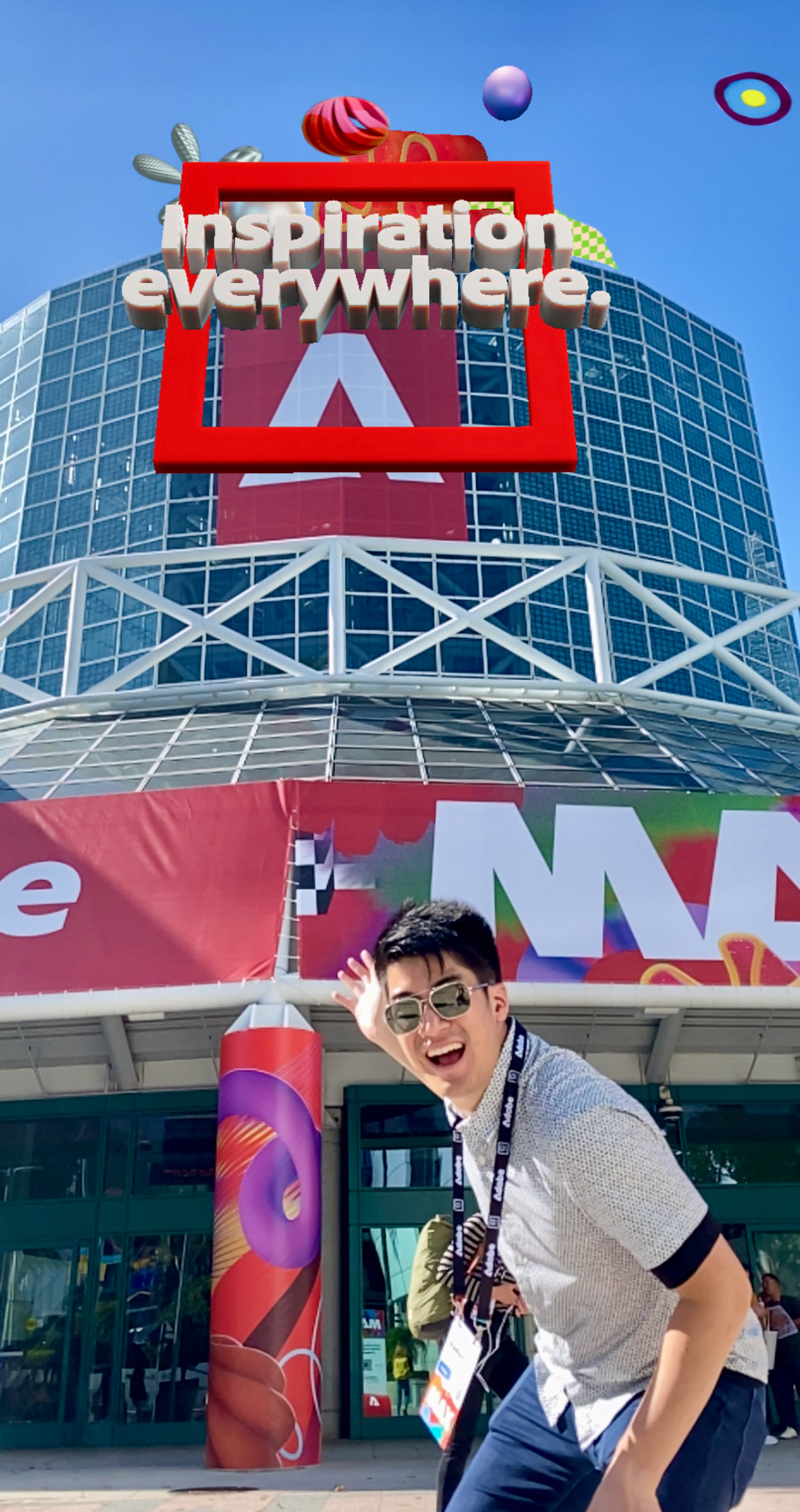Doggy Bootcamp
AUGMENTED REALITY TRAINING TIPS
AUGMENTED REALITY DESIGN | MAY 2023
BRIEF
Students will utilize emerging technologies to create a physical sticker that is tied to an immersive augmented reality (AR) experience. The project involves conducting thorough research, conceptualizing a design, and producing an AR experience that includes a physical printed sticker, augmented reality content, and audio.
Modes of communication and engagement must be explored through the placement of the sticker. The sticker placement should encourage engagement from the target audience. Students will gain valuable experience designing for new mediums and creating compelling interactive experiences.
Modes of communication and engagement must be explored through the placement of the sticker. The sticker placement should encourage engagement from the target audience. Students will gain valuable experience designing for new mediums and creating compelling interactive experiences.
CHALLENGE
- Gain hands-on experience in AR design and production, and understand how it differs from VR and MR.
- Design an AR experience that incorporates a physical sticker, AR content, and audio.
- Meet one of three outcomes with the AR experience: inspire, educate, or prompt a "call to action."
- Explore new communication and engagement through placement of the sticker.
DESIGN APPROACH
For this project, I chose to create an AR experience that provides the viewer with tips for teaching dogs six common commands: sit, lay down, speak, shake, beg, and wait. Along with the training tips, I included animations of an illustrated dog to show each command. The animations act to further engage the viewer and provide a visual aid for what each trick looks like when executed.
TARGET AUDIENCE
Those with an interest in dogs and learning more about dog training (such as dog owners and people who interact with dogs frequently).
ROLE
Research, Visual Design, Illustration, Animation, Prototyping, Print Graphics, AR Design
APPLICATIONS
Procreate, Adobe After Effects, Adobe Aero, Adobe Illustrator, Adobe Photoshop
TEAM
Solo designer
WHY
School/Portfolio Project
STICKER DESIGN
I created a 4"x4" circular sticker with imagery of a golden retriever in an outdoor setting. I chose to include the subtitle, "Augmented Reality Training Tips," to provide additional context for the QR code and encourage viewers to engage with the experience; without it, I felt the viewer would be unclear on the purpose of the QR code and would be unlikely to scan it. In the context of the title, "Doggy Bootcamp," viewers would know that the AR experience relates to dog training tips.
I placed the sticker on the back of a bench at a dog park since there is heavy traffic from my target audience. The bench has four dog cutouts with a solid middle section, which allowed for really great placement. Since the bench is black, it also contrasts very nicely with the sticker and increases visibility. I chose to place it on the back partly due to the orientation of the bench relative to the dog park entrance; as you walk up to the park, the back is very visible. I also felt this would reduce wear on the sticker from those sitting on it, and the slope may help protect it from the weather. This side also faces west, giving it plenty of direct light in the afternoon/evening when many people take their dogs to the park; I found that good lighting greatly increases the tracking quality of the AR content.




AR with voiceover:
RESEARCH
I began my research by creating a moodboard of other AR projects; this gave me insight into how others have used AR to enhance both their designs and the viewer's experience. In the spirit of using new technology, I also utilized ChatGPT (AI), to assist with content for the tips on teaching dogs each command. I supplemented this information with what I learned from my own experiences training my family dog.


SKETCHES
In my initial sketches, I explored different layouts for both the sticker and the AR content. This allowed me to plan out how these layouts would interact and overlap in the AR experience. I chose a circular sticker design that would be flanked by buttons for the six commands.









PROTOTYPING
Before finalizing the sticker design, I printed several sizes (3"x3", 4"x4", 5"x5") to ensure that:
- The QR code scanned properly and linked to the AR content.
- The sticker provided a good anchor for the AR content that would track easily when moved.
As a result, I found that a 4"x4" size was optimal; it worked well for scanning and tracking, and keeping the size to a minimum increased the versatility of sticker placement. As I worked on the AR content in Adobe Aero, I used the prints to ensure that everything was working as expected.




ILLUSTRATIONS
Made using Procreate. The illustrations were made using overlapping layers to speed up animation.






REFLECTION
While working on this project, I ran into some issues maintaining reasonable file sizes. Although Adobe Aero does not have a file size limit, I wanted to keep the file as small as possible to decrease potential issues when viewing the AR experience. With so many animations, this proved difficult without losing quality or decreasing the frame rate. Since After Effects animations are imported to Aero as a PNG sequence, I used an image compressor to reduce the size of each animation. Each animation had between 40-200 PNGs in the sequence, so the compression reduced the total size of the Aero file from roughly 400MB to roughly 120MB. Although still larger than ideal, the experience still loads and runs smoothly. The total size of all files in the AR is roughly 36MB; the rest is likely due to the abundant behavior cues needed in Aero, so reducing the file size further was not possible.
Although there was a learning curve with using Adobe Aero, I am very pleased with how this project turned out. I loved making the illustrations and animations, and it was fun learning how to use AR. If I had more time, I would have liked to make stickers with different dog breeds. Although it wasn't tangible within the timeline of this project, it is something I will likely pursue in the future.












